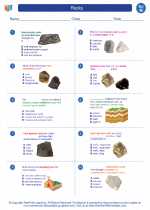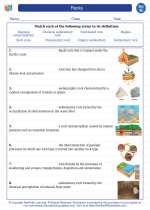Nickel
Nickel is a chemical element with the symbol Ni and atomic number 28. It is a silvery-white lustrous metal with a slight golden tinge. Nickel belongs to the transition metals and is hard and ductile. It is often used in alloys, with stainless steel being a common example. Nickel is also a vital element for many living organisms and has a variety of industrial uses.
Physical and Chemical Properties
Here are some of the key physical and chemical properties of nickel:
- Atomic number: 28
- Atomic symbol: Ni
- Atomic weight: 58.6934
- Phase at room temperature: Solid
- Melting point: 1455°C (2651°F)
- Boiling point: 2730°C (4946°F)
- Density: 8.908 grams per cubic centimeter
- Electron configuration: [Ar] 3d8 4s2
- Common oxidation states: +2, +3
- Common isotopes: Ni-58, Ni-60, Ni-61, Ni-62, Ni-64
Uses of Nickel
Nickel has a wide range of uses, including:
- Production of stainless steel
- Manufacturing of coins
- Production of nickel-based alloys, such as Inconel and Monel
- Electroplating to provide a decorative and protective coating
- Catalysts in chemical reactions
- Component in rechargeable batteries
- Medical applications, such as in prosthetics and implants
Health and Environmental Effects
While nickel is an essential element for many organisms, it can also have negative health and environmental effects. Prolonged exposure to high levels of nickel can lead to allergic reactions and lung cancer. Nickel compounds are also known to be harmful to the environment and can cause pollution if not handled properly.
Study Guide
Here are some key points to remember when studying nickel:
- Understand the physical and chemical properties of nickel, including its atomic number, atomic weight, and common oxidation states.
- Be familiar with the uses of nickel in various industries, such as stainless steel production and electroplating.
- Recognize the potential health and environmental effects of nickel exposure and the importance of proper handling and disposal.
- Review the role of nickel in biological systems and its significance as an essential element for certain organisms.
By understanding these key points, you can develop a comprehensive understanding of the properties, uses, and effects of nickel.
.◂Science Worksheets and Study Guides Eighth Grade. Rocks

 Worksheet/Answer key
Worksheet/Answer key
 Worksheet/Answer key
Worksheet/Answer key
 Vocabulary/Answer key
Vocabulary/Answer key
 Vocabulary/Answer key
Vocabulary/Answer key
 Vocabulary/Answer key
Vocabulary/Answer key
